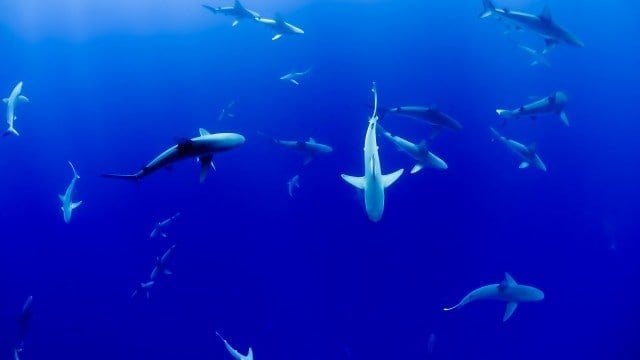Sharks don’t only have powerful jaws. They also have enviably strong spines. Their spines constantly flex when they swim, but never wear out during the fish’s lifetime.
Human bones, however, cannot endure the same kind of bending and become more fragile as people age.
Northwestern Medicine scientist Stuart Stock is using the U.S. Department of Energy’s Advanced Photon Source (APS) at Argonne National Laboratory to better understand shark vertebrae’s formation and strength. He wants to know how the fish’s tissue develops and how it functions when the fish swims.
Stock thought shark vertebrae could reveal information that would help people with degenerative bone disease, because current diagnosis and treatment methods are lacking. He hopes his research will shed light on the functionality of human bone and cartilage.
Stock is a research professor of cell and developmental biology at Northwestern University Feinberg School of Medicine.
He is using high-resolution, 3D X-ray imaging on the vertebrae.
“I believe there is a lot to learn here,” Stock said. “I’m excited about what I’m going to find.”
Argonne’s APS, which works like a giant X-ray, is a Department of Energy Office of Science user facility. It produces extremely bright, focused X-rays that peer through dense materials and illuminate matter at the molecular level. By way of comparison, the X-rays produced at today’s APS are up to one billion times brighter than the X-rays produced in a typical dentist’s office.
Stock has spent his career working in the area of X-ray scattering and tomography, developing new techniques to study how bone mineral and bone-mineralized collagen respond to stress.
“Most of my work is actually in animal bones,” he said. “But animal bones behave much like human bones and are far easier to obtain and study.”
Stock, who started using the APS for the shark project earlier this summer, first became interested in the animal’s vertebrae three years ago after learning about a colleague’s experiment with the fish.
“It’s the kind of thing as a scientist where you find there is an area open to discovery, one that might prove analogous to research in humans,” he said.
Stock has been using X-ray imaging since the early 2000s: Two years ago, he used a different APS beamline to see inside an Egyptian mummy without disturbing its ancient wrapping. He found, among many other discoveries, a piece of calcite above the mummy’s abdomen. Stock believes it might have been part of an ancient burial ritual. Similarly, Stock hopes the shark study will reveal unexpected and exciting results.
“I have a feeling we are going to learn something very crucial about how bones and cartilage form,” he said. “I think it’s going to open a window into understanding what bone and cartilage do.”
“Right now, if we look at how we diagnose osteoporosis — a disease that will afflict most of the population, including men — we measure the amount of mineral in the bone by shining X-rays through the forearm,” Stock said. “But it’s not that great a predictor. If it were, it would be right 95 percent of the time and it’s not.”
Patients would be better served if doctors had a greater understanding of the 3D arrangement of the minerals within bones, he said. But even this has its limitations.
“We’re still missing something,” Stock said. “And every time we get new knowledge in this area, it will ultimately help us develop better replacement tissue, allowing more success clinically.”
Stock is collaborating with the Apex Predators Program, part of the National Oceanographic and Atmospheric Administration. The shark spine samples were from sharks that died of natural causes.


